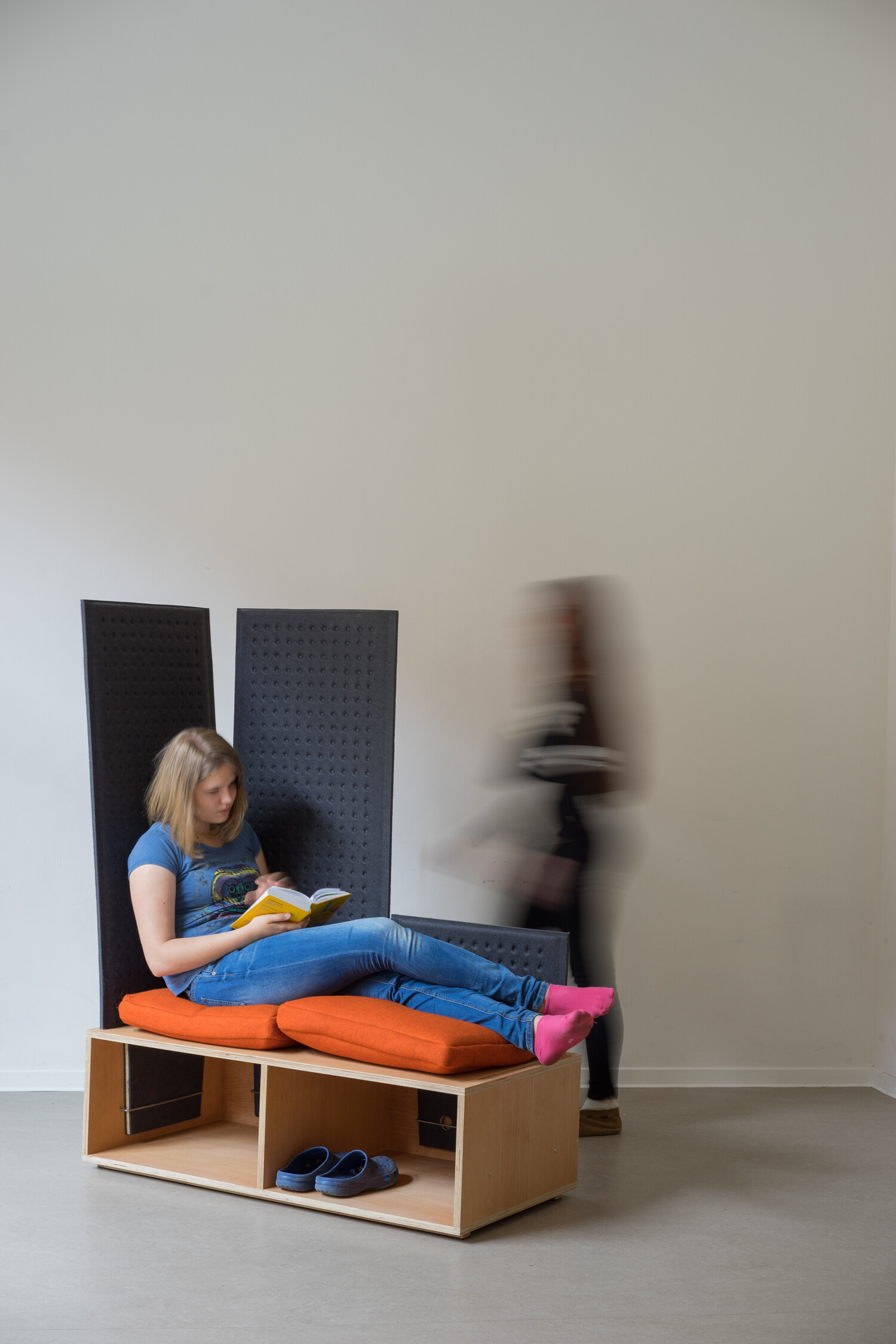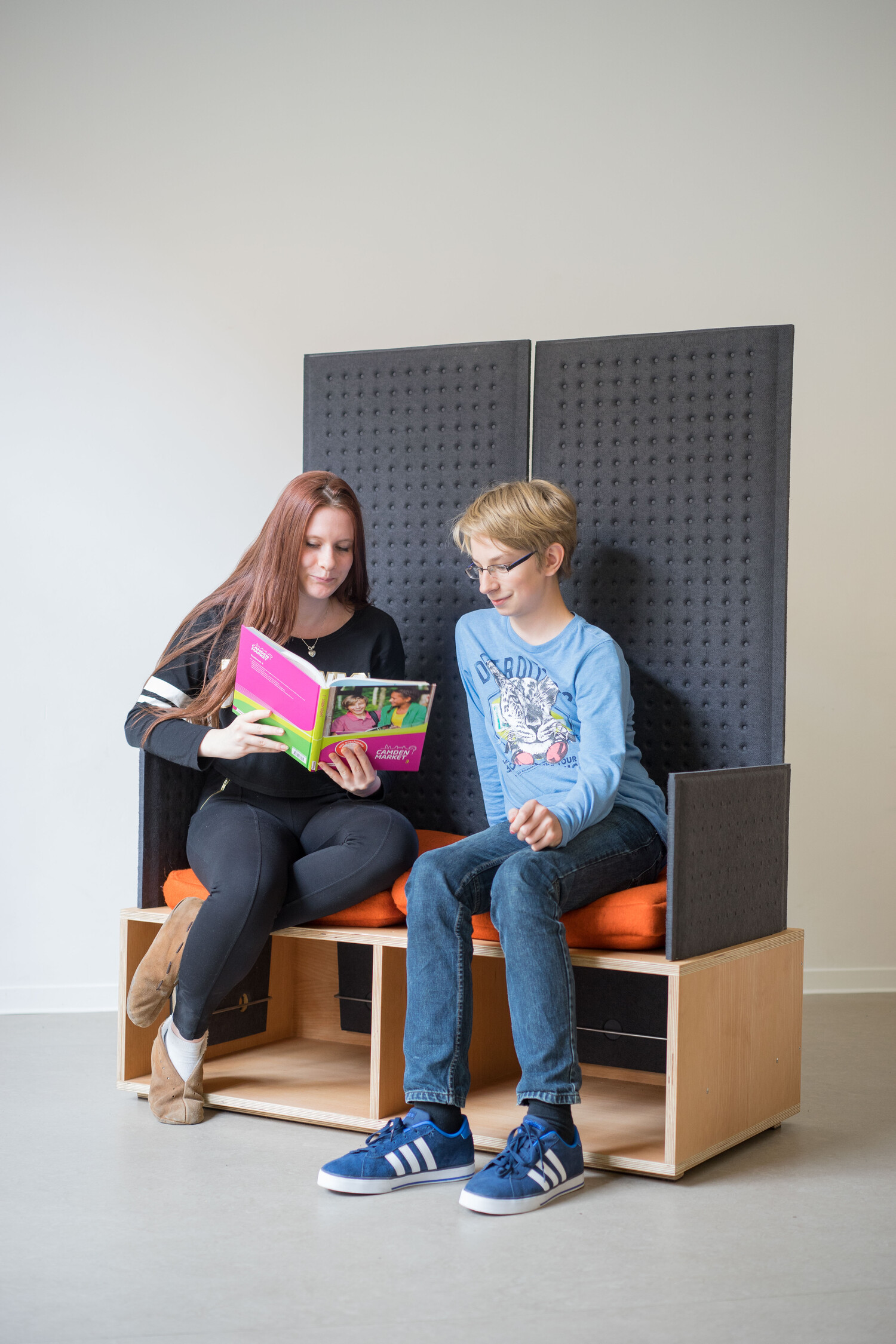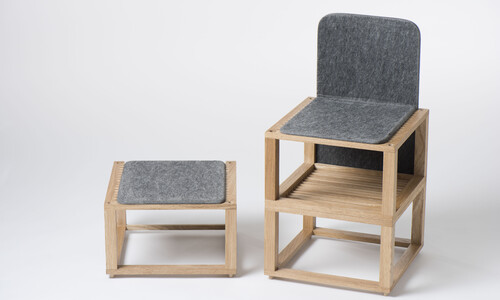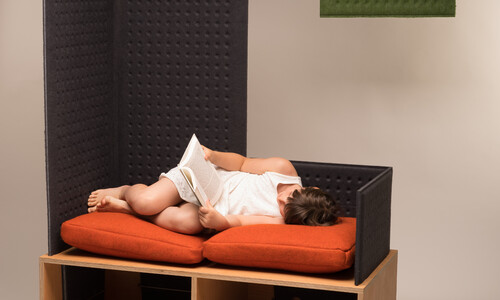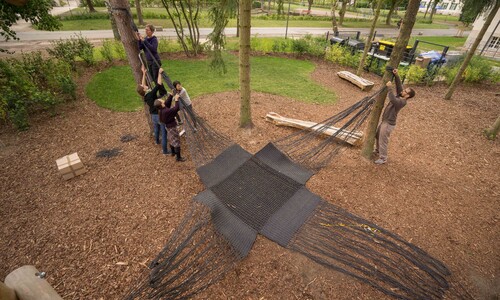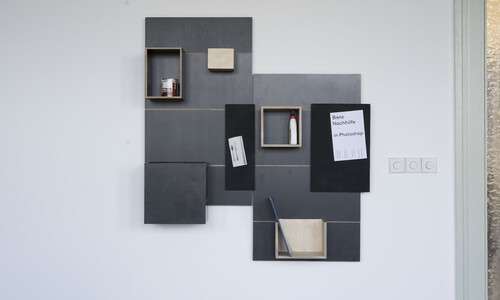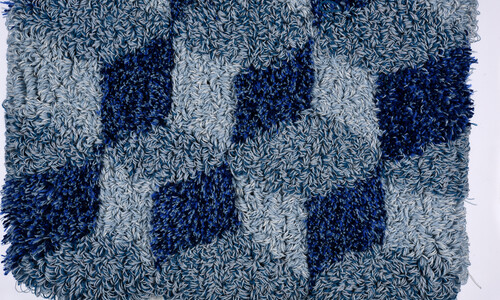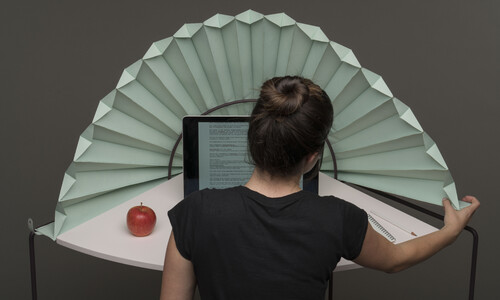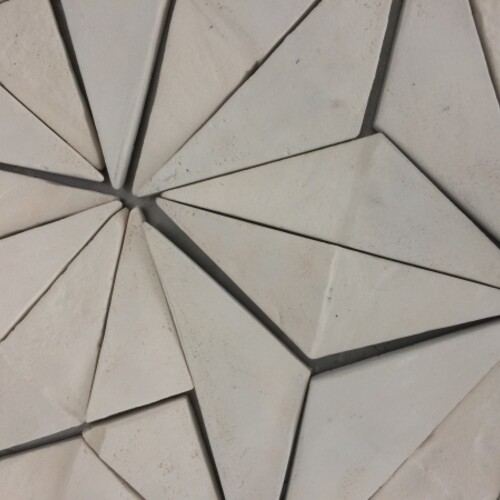My considerations for design concepts for the Montessori School Berlin-Buch initially focused on my immediate impressions as well as the needs of the students, expressed in surveys and interviews. Striking issues were the lack of retreat spaces, the sometimes very high noise levels, and the general restlessness in the rooms. Accordingly, the students’ ideas leaned toward clearer spatial structure, calmer zones, and comfortable, secluded areas for learning, socializing, and so on. From this emerged the goal of structuring the existing space with elements that create a more flexible and personalized environment.
The first designs led to tent-like constructions and mobile folding screens, which could be used, for example, to partially separate areas. I also explored the concept of fully furnished rooms covered in felt, creating a wonderfully dampened environment, as well as ways to divide and manipulate space using large-scale textile elements. The solution that finally crystallized, incorporating input from the different participants, manifests as a singular object that is compact and transformable—a hybrid of a folding screen and seating furniture, which simultaneously structures the space.
The modular object works on the principle of a plug-in system: its base element is a wooden bench that seats two people and features slots. Differently sized side and back panels made of thermoformed felt can be inserted into these slots. This allows the form and function of the bench to be freely varied, either as a semi-enclosed capsule or as an open seating unit. Using the taller back and side panels creates a personal space while also dividing the room. By combining multiple modules, more secluded spatial arrangements can be formed, or—on the reverse side—entire wall surfaces.
The friendly appearance and tactile quality of the material enhance the inviting effect of this “island.” At the same time, the constantly transformable nature of the system is appealing. In the “open” mode, the lightweight felt components can be hung on the wall, distributing them throughout the room. In this position, as well as when in use, they also provide acoustic damping. The bench can serve as an introverted retreat for contemplative work or as an open, connecting element for group activities. Its modularity and transformability offer various opportunities for interaction, expanding the students’ freedom to shape their own learning environment—a focal point and a room within a room.
